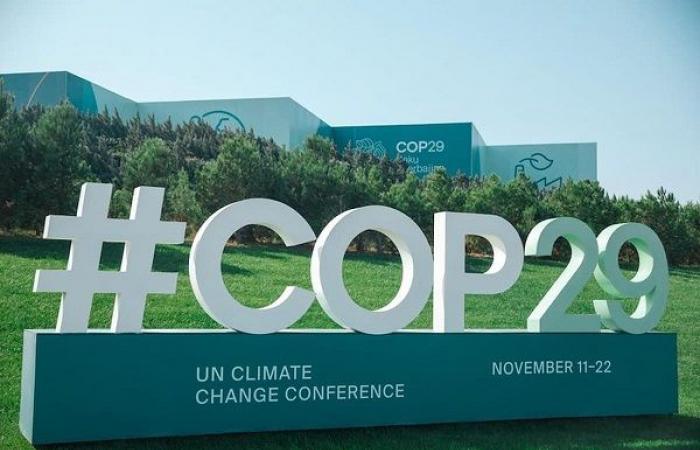The capital Baku began on Saturday to welcome heads of state and governments, as well as the various delegations participating in this global event to find solutions to the threats of climate change, while the UN had warned of a world record greenhouse gas (GHG) emissions reached in 2023.
“It is a great honor” for Azerbaijan to host this conference, said the country’s president Ilham Aliyev in a speech at the 15th Petersberg Dialogue on climate, held last April in Berlin. According to Mr. Aliyev, hosting this climate mass is a “sign of respect from the international community” for what his country is doing, particularly in the field of green energies.
“It’s a big responsibility because we don’t just want to organize a good event, but also give good results,” he stressed. The year 2024 was proclaimed by the president as the year of solidarity for a green world in Azerbaijan. The country had set itself the objective of reducing GHG emissions by 35% until 2030 and by 40% until 2050 compared to the base year (1990).
COP29 will focus, like other COPs, primarily on accelerating global efforts to mitigate and adapt to climate change. Its action agenda aims to ensure accessibility of resources for developing countries, indicated a few days ago, Mukhtar Babayev, the Azerbaijani Minister of Ecology and Natural Resources and President of the current COP.
The international community has high expectations from this global climate event, as global warming “already devastates communities around the world, particularly the poorest and most vulnerable”, as the executive director of the United Nations Program for Climate Change declared. environment (UNEP), Inger Andersen. “Violent storms flatten houses, fires wipe out forests, and land degradation and drought degrade landscapes,” lamented Ms. Andersen, quoted in a UNEP report titled “The 2024 Adaptation Gap: Against the Winds and tides”.
Thus, the UN Program believes that it is high time to start with commitments to increase financing for adaptation and calls for a “new quantified collective objective” for climate financing at COP29. While international adaptation financing for developing countries reached $28 billion in 2022, it remains well below needs. UN estimates suggest that between $187 billion and $359 billion per year will be needed to close the adaptation finance gap.
According to international media, several states including India, the Arab group and the Africa group have made proposals varying between 1,000 and 1,300 billion dollars per year, between 2025 and 2030. Developed countries have rejected these sums.
For its part, the presidency of the host country of this climate mass has a vision which “rests on two main pillars: strengthening ambition and mobilizing action. This vision aims to define concrete action plans to maintain the objective of limiting the rise in temperatures to +1.5°C, while ensuring that no one is left behind,” said the Ambassador. from Azerbaijan to Morocco, Nazim Samadov, in a statement to MAP. The Presidency also undertakes to “conduct the negotiations in a transparent, impartial and inclusive manner, with particular emphasis on climate financing. It calls on Parties to submit ambitious national contributions and reach consensus on a new collective quantified climate finance target (NCQG) that is equitable and ambitious,” added Mr. Samadov.
Furthermore, Morocco recently supported 14 initiatives launched by Azerbaijan to encourage cooperation and global climate action, “thus reinforcing the commitment of countries of the South to collaborate on climate objectives”, he said. -he rejoiced. For its part, the European Union had underlined the importance of agreeing on a NCQG in terms of climate financing which is achievable and adapted to its objective.
The new target should, according to the EU, be designed based on a “broad, transformative and multi-level approach”, including diverse financial flows and a broader group of contributors, and reflect the evolution of respective economic capacities and the growing share of global GHG emissions since the early 1990s. COP29 must also focus on the issue of loss and damage, strengthening international cooperation in carbon markets and solutions based on nature and transitions to clean energies.
Article 6 of the Paris Agreement, human rights in climate policies and the participation of civil society and indigenous peoples will also be on the agenda of this climate summit.
MAP / Soumia Al Arkoubi






